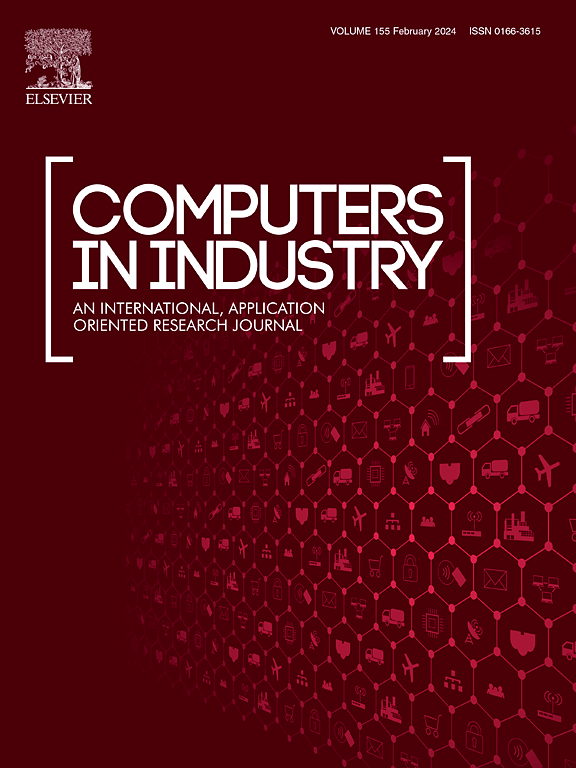A deep transfer learning model for online monitoring of surface roughness in milling with variable parameters
IF 8.2
1区 计算机科学
Q1 COMPUTER SCIENCE, INTERDISCIPLINARY APPLICATIONS
引用次数: 0
Abstract
Surface roughness is crucial for the functional and aesthetic properties of mechanical components and must be carefully controlled during machining. However, predicting it under varying machining parameters is challenging due to limited experimental data and fluctuating factors like tool wear and vibration. This study develops a deep transfer learning model that incorporates the correlation alignment method and tool wear to enhance model generalization and reduce data acquisition costs. It utilizes multi-sensor data and the ResNet18 with a convolutional block attention module (CBAM-ResNet) to extract features with improved generalization and accuracy for monitoring milled surface roughness under varying conditions. The performance of the model is evaluated from different perspectives. First, the proposed model achieves high accuracy with fewer than 500 experimental samples from the target domain by using the CORAL module in the CBAM-ResNet model. This demonstrates the model's strong generalization capability by minimizing second-order statistical discrepancies between different datasets. Second, ablation experiments reveal a significant reduction in test error when incorporating CORAL and tool wear, highlighting their contributions to improved model generalization. Integrating tool wear information significantly reduces test errors across various transfer conditions, as it reflects changes in cutting force, vibration, and built-up edge formation. Third, comparisons with existing deep transfer models further emphasize the advantages of the proposed approach in improving model generalization. In summary, the proposed surface roughness model, which incorporates tool wear and multi-sensor signal features as inputs and employs feature transfer and CBAM-ResNet, demonstrates superior generalization and accuracy across various machining parameters.
用于在线监测铣削过程中可变参数表面粗糙度的深度迁移学习模型
表面粗糙度对机械部件的功能和美观性能至关重要,因此在加工过程中必须小心控制。然而,由于实验数据有限以及刀具磨损和振动等波动因素,预测不同加工参数下的表面粗糙度具有挑战性。本研究开发了一种深度迁移学习模型,该模型结合了相关对准方法和刀具磨损,以增强模型的泛化并降低数据采集成本。该模型利用多传感器数据和带有卷积块注意模块(CBAM-ResNet)的 ResNet18 提取特征,提高了泛化能力和准确性,用于监测不同条件下的铣削表面粗糙度。该模型的性能从不同角度进行了评估。首先,通过使用 CBAM-ResNet 模型中的 CORAL 模块,所提议的模型在目标域中只需不到 500 个实验样本就能达到很高的精度。这证明了该模型通过最小化不同数据集之间的二阶统计差异具有强大的泛化能力。其次,消融实验显示,在整合 CORAL 和工具磨损信息后,测试误差显著减少,突出了它们对改进模型泛化的贡献。由于刀具磨损信息反映了切削力、振动和积聚边缘形成的变化,因此整合刀具磨损信息可显著减少各种传输条件下的测试误差。第三,与现有深度传递模型的比较进一步强调了所提出的方法在提高模型通用性方面的优势。总之,所提出的表面粗糙度模型将刀具磨损和多传感器信号特征作为输入,并采用了特征转移和 CBAM-ResNet 技术,在各种加工参数下都表现出了卓越的通用性和准确性。
本文章由计算机程序翻译,如有差异,请以英文原文为准。
求助全文
约1分钟内获得全文
求助全文
来源期刊

Computers in Industry
工程技术-计算机:跨学科应用
CiteScore
18.90
自引率
8.00%
发文量
152
审稿时长
22 days
期刊介绍:
The objective of Computers in Industry is to present original, high-quality, application-oriented research papers that:
• Illuminate emerging trends and possibilities in the utilization of Information and Communication Technology in industry;
• Establish connections or integrations across various technology domains within the expansive realm of computer applications for industry;
• Foster connections or integrations across diverse application areas of ICT in industry.
 求助内容:
求助内容: 应助结果提醒方式:
应助结果提醒方式:


